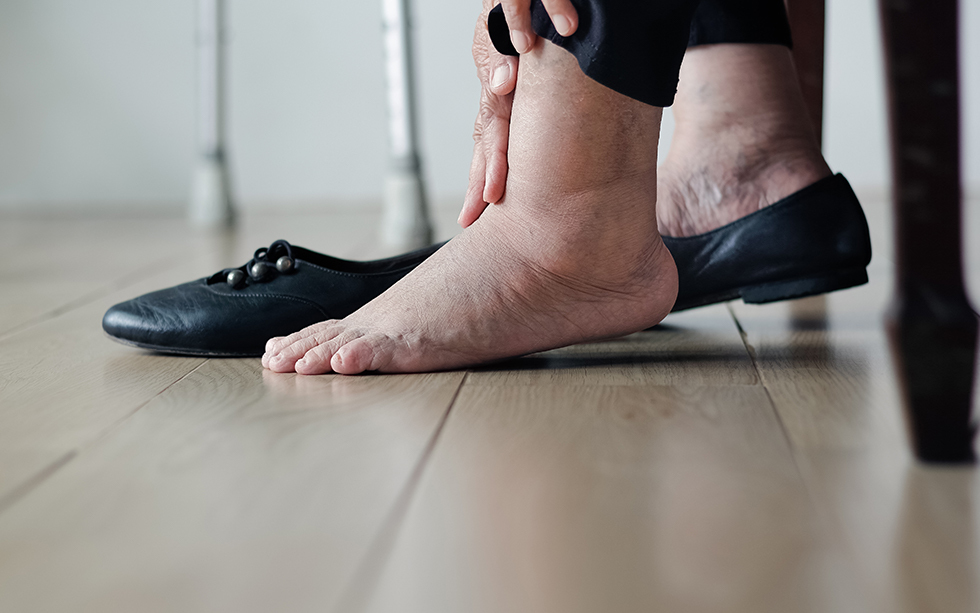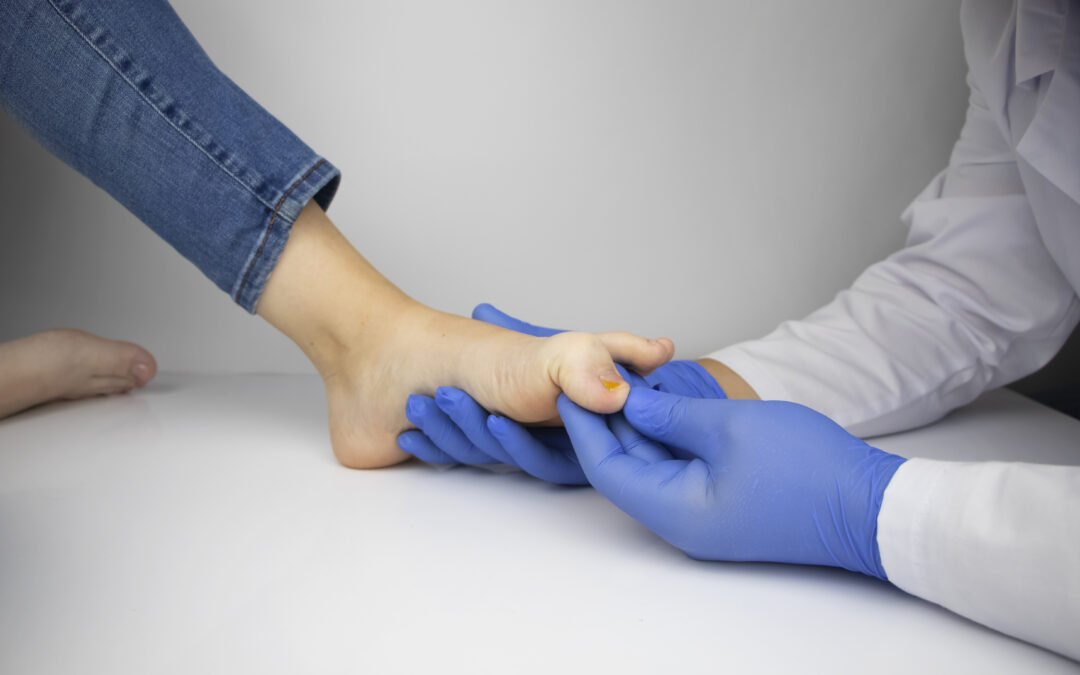For most people, a cut, scrape, or blister on the foot doesn’t cause much damage. It heals quickly and — though it might cause some pain — it doesn’t cause significant medical problems. However, for those living with diabetes minor cuts and skin wounds can evolve into more severe lesions known as diabetic foot ulcers.
Here are some frequently asked questions about diabetic foot ulcers that Podiatry Associates wants more people to understand.
What Is A Diabetic Foot Ulcer?
A diabetic foot ulcer is an open wound on the foot of people living with diabetes.
Foot ulcers impact up to 15% of patients with diabetes. Untreated diabetic foot ulcers can lead to complications such as local wound site infections. In severe cases, diabetic ulcers of the foot may lead to amputations.
What Are The Symptoms Of A Diabetic Foot Ulcer?
Diabetic foot ulcers are visible open skin wounds on the foot.
Often those with diabetic foot ulcers do not feel the skin wounds developing due to a loss of sensation or feeling in the foot. Pain isn’t typically associated with these types of ulcers. However, ulcers can become infected, and the infection can spread, which may cause pain and tissue damage.
What Causes Diabetic Foot Ulcers?
The cause of diabetic foot ulcers is often multifactorial. Foot ulcers are usually caused by a combination of factors such as: uneven gait, chronic pressure on bony prominences, poorly controlled blood sugar levels, poor circulation or decreased sensation in the feet. There are other causative factors possible.
Risk factors for developing foot ulcers include:
- Race: Foot ulcers are more common in those of Hispanic, Native American, and African American descent
- Age: While foot ulcers occur in young adults, they are more common in older patients
- Gender: Men are at higher risk than women
- Insulin: Those who use insulin are at a higher risk. However, diabetics on diet control or oral diabetic medication are also at risk for foot ulcers
- Diseases: Those living with kidney disease, heart disease, and eye disease are at a higher risk of diabetic foot ulcers
- Sedentary lifestyle: Those who engage in regular exercise may control their body weight and glucose control. This may improve their circulation. Thus, they have an easier time preventing diabetic foot ulcers
- Dietary choices: Eating healthy foods and following a healthy diet may help prevent diabetic foot ulcers
- Alcohol use: Using alcohol raises the risk of diabetic foot ulcers
- Tobacco use: Using tobacco raises the risk of diabetic foot ulcers
How Are Diabetic Foot Ulcers Treated?
Prevention of foot ulcers is ideal. Still, if a diabetic patient does develop a foot ulcer, they need to see a doctor right away. The podiatrist will initially perform a thorough examination. They may then prescribe a treatment routine including: wound cleansing, dressing changes, antibiotics, pressure relief and ulcer debridement. Monitoring and controlling blood sugar will greatly assist healing. A lifetime of preventative care and medical follow up will be ongoing steps in the process and will help prevent recurrence.
Do You Always Need Surgery?
No, diabetic foot ulcers do not always need surgery. Surgery is typically reserved for wounds that fail to heal with treatment, ulcers with severe infection and the most severe ulcer cases.
Do Diabetic Foot Ulcers Require Hospitalization?
The large majority of diabetic foot ulcers will heal following treatment in the office. Similar to the need for surgery, only a small percent of foot ulcers with severe infection or ulcers unresponsive to standard treatment will require hospitalization.
Can You Prevent Diabetic Foot Ulcers?
Luckily, diabetic foot ulcers are preventable in most cases. Patients living with diabetes should be educated as to self care of their diabetes at home. This includes :
- Daily self inspection of the feet
- Seeking immediate medical evaluation of any concerns or changes in the feet
- Daily foot hygiene, followed by thorough drying of the skin on the foot
- Applying moisturizing lotion or cream to excessively dry skin on the foot
- Avoid barefoot walking
- Wear high quality, well fit shoes
- Proper cutting of toenails to prevent self injury or seeking a podiatrist for foot care
Finally, it will be important for those living with diabetes to stay on top of blood glucose control and preventative care for their diabetes. This includes maintaining visits with your primary care physician or endocrinologist and your podiatrist. Diabetics of every age should have an annual diabetic foot exam performed by a podiatrist and additional podiatry care as needed.
Maintaining a doctor-patient relationship will go a long way toward prevention, and Podiatry Associates is here to help with your diabetic foot needs.





